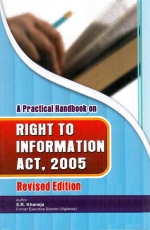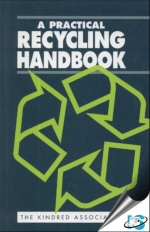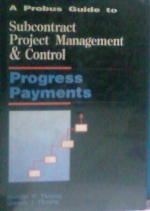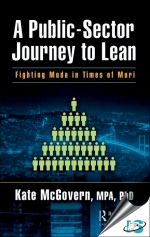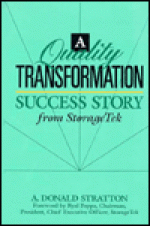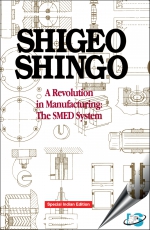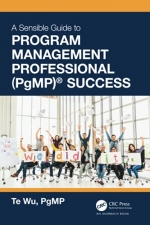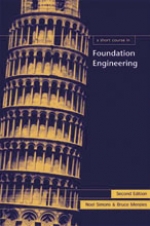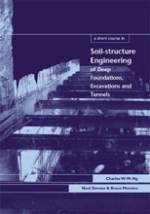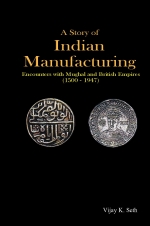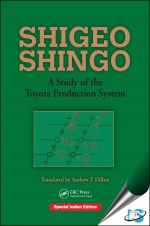Site Breadcrumb
Total Record : 10230
ISBN: 1138486647 / 9781138486645
Year: 2019
Availability: 2 to 3 weeks print-
A guide to refinishing suitable for complete beginners and more advanced technicians.
This heavily illustrated guide will help students through their Level 2 and 3 vehicle refinishing qualifications and be useful as a reference and trouble shooter for more advanced technicians. It is set out in the order in which a vehicle is repaired.
There are sections covering:
- identifying different substrates, with an explanation of how this affects the materials to be chosen and techniques to be used
- preparation work required prior to the application of foundation materials
- how to choose the correct foundation material
- shaping and sanding techniques
- different types of popular top coats and the required application techniques
- glossaries for tools and equipment
- health and safety considerations
This book has been designed and written by a true ‘petrol head’ whose career and hobbies have revolved around motor vehicles and the refinishing trade. He has been in the motor trade for more than 16 years and has delivered Refinishing qualifications to students for over 11 years. Someone who has never before held a spray gun should be able to understand stage-by-stage, or they can dip in for precise trouble shooting and tips.
- printmohan- nprint-
A guide to refinishing suitable for complete beginners and more advanced technicians.
This heavily illustrated guide will help students through their Level 2 and 3 vehicle refinishing qualifications and be useful as a reference and trouble shooter for more advanced technicians. It is set out in the order in which a vehicle is repaired.
There are sections covering:
- identifying different substrates, with an explanation of how this affects the materials to be chosen and techniques to be used
- preparation work required prior to the application of foundation materials
- how to choose the correct foundation material
- shaping and sanding techniques
- different types of popular top coats and the required application techniques
- glossaries for tools and equipment
- health and safety considerations
This book has been designed and written by a true ‘petrol head’ whose career and hobbies have revolved around motor vehicles and the refinishing trade. He has been in the motor trade for more than 16 years and has delivered Refinishing qualifications to students for over 11 years. Someone who has never before held a spray gun should be able to understand stage-by-stage, or they can dip in for precise trouble shooting and tips.
- print...ISBN: 8192251705 / 9788192251707
Year: 2011
Availability: Out of Stock print- - printmohan- nprint- - print...
| Buy This Item |
| List Price: ` 380 |

Notify Me |
ISBN: 1575901137 / 9781575901138
Year: 2001
Availability: Out of Stock print-
This truly practical manual is the follow-up to A Practical Manual on Microbiologically Influenced Corrosion, first released by NACE International in 1993. A perfect companion to the first edition, Volume 2 uses the same format while providing new material and current developments with an international influence. Some of the topics covered include: the role microorganisms play in corrosion reactions, the occurrence of MIC in varying industries, advice on how to identify whether or not corrosion problems are related to MIC, and MIC treatment and prevention tips. The topics listed above are illustrated through numerous charts, graphs, and photographs. Each chapter is authored by a recognized expert in the field of MIC.
- printmohan- nprint-This truly practical manual is the follow-up to A Practical Manual on Microbiologically Influenced Corrosion, first released by NACE International in 1993. A perfect companion to the first edition, Volume 2 uses the same format while providing new material and current developments with an international influence. Some of the topics covered include: the role microorganisms play in corrosion reactions, the occurrence of MIC in varying industries, advice on how to identify whether or not corrosion problems are related to MIC, and MIC treatment and prevention tips. The topics listed above are illustrated through numerous charts, graphs, and photographs. Each chapter is authored by a recognized expert in the field of MIC.
- print...| Buy This Item |
| List Price: $ 139 |

Notify Me |
ISBN: 0727719904 / 9780727719904
Year: 1994
Availability: Out of Stock print-
The 1990s have already seen the introduction of more environmental legislation than any other decade.
Furthermore, with EC Directives on such matters as hazardous waste, landfill, packaging and packaging waste, etc., currently being either drafted or published for consultation, we may be certain that waste management will maintain a very high profile for the foreseeable future. At present, recycling is one of the most important elements in a waste management strategy.
This book provides practical advice and guidance on recycling and considers the various methods available for collecting and recycling as much of the domestic waste as is possible. Each chapter tackles a different topic and finishes with a simple checklist to which you can refer in your day-to-day work situations.
This book will be of benefit to senior managers, recycling officers, local government offices, voluntary workers, in fact, anyone who takes an active role in the managing and recycling of waste.
The 1990s have already seen the introduction of more environmental legislation than any other decade.
Furthermore, with EC Directives on such matters as hazardous waste, landfill, packaging and packaging waste, etc., currently being either drafted or published for consultation, we may be certain that waste management will maintain a very high profile for the foreseeable future. At present, recycling is one of the most important elements in a waste management strategy.
This book provides practical advice and guidance on recycling and considers the various methods available for collecting and recycling as much of the domestic waste as is possible. Each chapter tackles a different topic and finishes with a simple checklist to which you can refer in your day-to-day work situations.
This book will be of benefit to senior managers, recycling officers, local government offices, voluntary workers, in fact, anyone who takes an active role in the managing and recycling of waste.
| Buy This Item |
| List Price: £ 51.75 |

Notify Me |
ISBN: 0872638642 / 9780872638648
Year: 2010
Availability: In Stock print-
In the completely revised 2nd edition, additional chapters and more case studies add to the clear, simple, and essentially non-mathematical presentation of the basic concepts, techniques, and applications of the renowned Taguchi approach. This practical guide introduces the fundamentals of Taguchi experimental design and shows engineers how to design, analyze, and interpret experiments for a wide range of common products and processes.
- printmohan- nprint-In the completely revised 2nd edition, additional chapters and more case studies add to the clear, simple, and essentially non-mathematical presentation of the basic concepts, techniques, and applications of the renowned Taguchi approach. This practical guide introduces the fundamentals of Taguchi experimental design and shows engineers how to design, analyze, and interpret experiments for a wide range of common products and processes.
- print...ISBN: 1434216276 / 9781434216274
Year: 2009
Availability: Out of Stock print- - printmohan- nprint- - print...
| Buy This Item |
| List Price: $ 21.32 |

Notify Me |
ISBN: 1557382832 / 9781557382832
Year: 1992
Availability: In Stock print- - printmohan- nprint- - print...
ISBN: 113854275X / 9781138542754
Year: 2018
Availability: 2 to 3 weeks print-
Most Lean practitioners learn about the three Ms: muda (waste), mura (unevenness or variability), and muri (overburden), and beginners in Lean generally focus on the removal of muda.
The impact of muri is not as readily understood. It is extremely significant, however, for those working in government. Decisions on staffing levels and resource allocation are made by elected officials who are generally disconnected from daily operations. Short-sighted cost-cutting makes it difficult to deliver quality services as efficiently as possible. The mantra of "do more with less" creates ever-increasing muri.
In contrast to robust Lean programs in privately owned companies, efficiency initiatives are regularly cut from public-sector budgets. Antiquated systems remain in place, with too few workers to operate the existing processes. The debilitating impact of persistent muri brings burnout and turnover, perpetuating a vicious cycle.
Despite the muri, a dedicated cadre of public servants is hard at work using Lean techniques and principles to break down bureaucratic red tape and improve the quality of services at every level of government across the country. While the author incorporated examples of Lean initiatives in other states to give readers an idea of all the terrific work that is occurring, this book is really the story of one of those journeys.
Using the author’s experience while working for the State of New Hampshire, you’ll learn about the steps along the way. Each chapter tells a story of what they did, what they learned, and how the lessons can be applied. Annotated outlines of White, Yellow, and Green Belt programs, and the Lean for Leaders workshop, as well as two hypothetical scenarios that were used as training exercises are included. These approaches are not intended to be authoritative or prescriptive; they are offered as insights and examples.
You’ll read about the challenges and pitfalls, and the creative countermeasures developed by a dauntless team of Lean practitioners. The story is shared to inform and encourage others -- material based on the New Hampshire Bureau of Education and Training’s Lean programs is included throughout the book.
Most Lean practitioners learn about the three Ms: muda (waste), mura (unevenness or variability), and muri (overburden), and beginners in Lean generally focus on the removal of muda.
The impact of muri is not as readily understood. It is extremely significant, however, for those working in government. Decisions on staffing levels and resource allocation are made by elected officials who are generally disconnected from daily operations. Short-sighted cost-cutting makes it difficult to deliver quality services as efficiently as possible. The mantra of "do more with less" creates ever-increasing muri.
In contrast to robust Lean programs in privately owned companies, efficiency initiatives are regularly cut from public-sector budgets. Antiquated systems remain in place, with too few workers to operate the existing processes. The debilitating impact of persistent muri brings burnout and turnover, perpetuating a vicious cycle.
Despite the muri, a dedicated cadre of public servants is hard at work using Lean techniques and principles to break down bureaucratic red tape and improve the quality of services at every level of government across the country. While the author incorporated examples of Lean initiatives in other states to give readers an idea of all the terrific work that is occurring, this book is really the story of one of those journeys.
Using the author’s experience while working for the State of New Hampshire, you’ll learn about the steps along the way. Each chapter tells a story of what they did, what they learned, and how the lessons can be applied. Annotated outlines of White, Yellow, and Green Belt programs, and the Lean for Leaders workshop, as well as two hypothetical scenarios that were used as training exercises are included. These approaches are not intended to be authoritative or prescriptive; they are offered as insights and examples.
You’ll read about the challenges and pitfalls, and the creative countermeasures developed by a dauntless team of Lean practitioners. The story is shared to inform and encourage others -- material based on the New Hampshire Bureau of Education and Training’s Lean programs is included throughout the book.
ISBN: 0873892518 / 9780873892513
Year: 1994
Availability: In Stock print-
This American success story is a direct result of quality improvement. The author explains and teaches the ideas and methodologies used in rebuilding StorageTek. The book uses many of the actual flowcharts and worksheets the quality teams developed to help demonstrate quality processes
- printmohan- nprint-This American success story is a direct result of quality improvement. The author explains and teaches the ideas and methodologies used in rebuilding StorageTek. The book uses many of the actual flowcharts and worksheets the quality teams developed to help demonstrate quality processes
- print...ISBN: 0367022699 / 9780367022693
Year: 2018
Availability: In Stock print-
Written by the industrial engineer who developed SMED (single-minute exchange of die) for Toyota, A Revolution in Manufacturing provides a full overview of this powerful just in time production tool. It offers the most complete and detailed instructions available anywhere for transforming a manufacturing environment in ways that will speed up production and make small lot inventories feasible. The author delves into both the theory and practice of the SMED system, explaining fundamentals as well as techniques for applying SMED. The critically acclaimed text is supported with hundreds of illustrations and photographs, as well as twelve chapter-length case studies.
- printmohan- nprint-Written by the industrial engineer who developed SMED (single-minute exchange of die) for Toyota, A Revolution in Manufacturing provides a full overview of this powerful just in time production tool. It offers the most complete and detailed instructions available anywhere for transforming a manufacturing environment in ways that will speed up production and make small lot inventories feasible. The author delves into both the theory and practice of the SMED system, explaining fundamentals as well as techniques for applying SMED. The critically acclaimed text is supported with hundreds of illustrations and photographs, as well as twelve chapter-length case studies.
- print...ISBN: 1574441396 / 9781574441390
Year: 1997
Availability: In Stock print-
Explains the principles and processes of Total Quality Management to create Continuous Quality Improvement
Allows change to be initiated at any level, and customized to meet the needs of different educational systems
Presents key measurement methods, including ways to identify resources, gauge success, and measure customer satisfaction
Emphasizes partnerships with business and higher education, and encourages cooperation among business, education, and government
Includes parents and other interested parties in the improvement process
When it comes to educational performance, the United States does not fare well in comparison to our global competitors. Numerous challenges, such as our increasing dependence on technology, and the ongoing difficulties we face in providing cost-effective, good quality public education, point to the need for changes in our educational system if we are to provide a competitive workforce in the future.
Explains the principles and processes of Total Quality Management to create Continuous Quality Improvement
Allows change to be initiated at any level, and customized to meet the needs of different educational systems
Presents key measurement methods, including ways to identify resources, gauge success, and measure customer satisfaction
Emphasizes partnerships with business and higher education, and encourages cooperation among business, education, and government
Includes parents and other interested parties in the improvement process
When it comes to educational performance, the United States does not fare well in comparison to our global competitors. Numerous challenges, such as our increasing dependence on technology, and the ongoing difficulties we face in providing cost-effective, good quality public education, point to the need for changes in our educational system if we are to provide a competitive workforce in the future.
ISBN: 083113514X / 9780831135140
Year: 2015
Availability: In Stock print-
This book shows the relationship between the sustainability movement and supply chains. It provides a guide for supply chain professionals, as well as government officials, corporate executives, and institutional leaders on how to direct their purchasing power so that they source products that not only fill the needs of their organizations, but that also contribute to the health and well-being of the planet. The author, Dr. Kevin Lyons, Ph.D., combined his experiences as the Chief Procurement Officer at Rutgers University with his own unique supply chain archaeology. His archaeological research involved sifting through garbage dumps where he examined the discarded products he procured for the university. Working backwards, he developed systems and techniques for making sure sustainable products entered the supply chain from the start. And once they no longer served their intended purpose, they were recycled or reused.
Features
- Plans for helping any organization develop green supply chains
- Complimentary Readiness Guide (Calculators and other useful materials) are available for download from the book’s website.
- Case studies that show how corporations and governments have gone green.
- Using weather data to plan for disruptions in the supply chain.
This book shows the relationship between the sustainability movement and supply chains. It provides a guide for supply chain professionals, as well as government officials, corporate executives, and institutional leaders on how to direct their purchasing power so that they source products that not only fill the needs of their organizations, but that also contribute to the health and well-being of the planet. The author, Dr. Kevin Lyons, Ph.D., combined his experiences as the Chief Procurement Officer at Rutgers University with his own unique supply chain archaeology. His archaeological research involved sifting through garbage dumps where he examined the discarded products he procured for the university. Working backwards, he developed systems and techniques for making sure sustainable products entered the supply chain from the start. And once they no longer served their intended purpose, they were recycled or reused.
Features
- Plans for helping any organization develop green supply chains
- Complimentary Readiness Guide (Calculators and other useful materials) are available for download from the book’s website.
- Case studies that show how corporations and governments have gone green.
- Using weather data to plan for disruptions in the supply chain.
ISBN: 0367702371 / 9780367702373
Year: 2021
Availability: In Stock print-
A Sensible Guide to Program Management Professional (PgMP)® Success is for program managers preparing to take the PgMP exam based on The Standard for Program Management – 4th Edition (PgM4 Standard). It is designed for busy professionals whose responsibilities have taken them into the realm of coordinating, facilitating, managing, and leading programs. Program managers are leaders who are directly managing large amounts of project resources for their organizations.
This study guide addresses three main concerns facing PgMP exam candidates:
- What are the essential concepts, processes, and tools that form the foundation of today’s program management?
- Since program management is still an emerging profession with professionals often working in different ways, what does this mean for a "standard" exam? More specifically, how does that impact your ability to pass the PgMP exam?
- What is the best way to prepare for the PgMP exam?
To address the first concern, this book highlights the underlying rationale for program management: why it exists in organizations; why it is becoming ever more important; what programs are, especially for the purpose of passing the exam; how to think like a portfolio manager; and what the most important concepts, processes, and tools are for this profession. By simplifying complex ideas and communicating them in plain English with relevant examples, this book aims to help readers not only to pass the PgMP exam but also to serve as an essential guide for program managers.
For the second concern, this book differs from other study guides by describing the author’s personal experience as a program manager and addressing the most pressing questions for each of the performance domains in The Standard for Program Management.
To address the last concern, this book contains 420 practice questions, access to an online exam simulator and an online PgMP community, and a time-tested approach for passing the PgMP exam.
A Sensible Guide to Program Management Professional (PgMP)® Success is for program managers preparing to take the PgMP exam based on The Standard for Program Management – 4th Edition (PgM4 Standard). It is designed for busy professionals whose responsibilities have taken them into the realm of coordinating, facilitating, managing, and leading programs. Program managers are leaders who are directly managing large amounts of project resources for their organizations.
This study guide addresses three main concerns facing PgMP exam candidates:
- What are the essential concepts, processes, and tools that form the foundation of today’s program management?
- Since program management is still an emerging profession with professionals often working in different ways, what does this mean for a "standard" exam? More specifically, how does that impact your ability to pass the PgMP exam?
- What is the best way to prepare for the PgMP exam?
To address the first concern, this book highlights the underlying rationale for program management: why it exists in organizations; why it is becoming ever more important; what programs are, especially for the purpose of passing the exam; how to think like a portfolio manager; and what the most important concepts, processes, and tools are for this profession. By simplifying complex ideas and communicating them in plain English with relevant examples, this book aims to help readers not only to pass the PgMP exam but also to serve as an essential guide for program managers.
For the second concern, this book differs from other study guides by describing the author’s personal experience as a program manager and addressing the most pressing questions for each of the performance domains in The Standard for Program Management.
To address the last concern, this book contains 420 practice questions, access to an online exam simulator and an online PgMP community, and a time-tested approach for passing the PgMP exam.
ISBN: 0727727516 / 9780727727510
Year: 2000
Availability: Out of Stock print-
Although there are now a large number of computer programmes for solving all sorts of foundation design problems, the need to check these outputs by 'hand-calculation' has become vitally important. This book concentrates on getting the fundamentals right and then using them in practical applications.
The book is illustrated with numerous worked examples and with quick-reference tables and charts. In this new edition, the original highly acclaimed text has been extended and updated and now includes major new sections on short term and long term stability, critical state interpretation of peak strength, seismic methods for measuring ground stiffness in situ, and offshore pile design: total stress and effective stress approaches.
Although there are now a large number of computer programmes for solving all sorts of foundation design problems, the need to check these outputs by 'hand-calculation' has become vitally important. This book concentrates on getting the fundamentals right and then using them in practical applications.
The book is illustrated with numerous worked examples and with quick-reference tables and charts. In this new edition, the original highly acclaimed text has been extended and updated and now includes major new sections on short term and long term stability, critical state interpretation of peak strength, seismic methods for measuring ground stiffness in situ, and offshore pile design: total stress and effective stress approaches.
| Buy This Item |
| List Price: £ 100 |

Notify Me |
ISBN: 0727733508 / 9780727733504
Year: 2008
Availability: Out of Stock print-
This book explains the process of ground formation – what it is made of and how it behaves as an engineering material. This enables the civil engineer to work from a few first principles to determine if the ground is an asset or a hazard.
It focuses on the tectonic plate mechanisms that give rise to the geology of our planet and describes the way these create hazards such as volcanic eruptions, earthquakes and tsunamis.
The authors state that groundwater can be both a resource and a hazard and through this book they provide an overview of the origins of geomaterials and their engineering properties.
This book shows how to read the ground by interpreting geological maps and recognising landforms and their associated hazards, such as landslides.
This book explains the process of ground formation – what it is made of and how it behaves as an engineering material. This enables the civil engineer to work from a few first principles to determine if the ground is an asset or a hazard.
It focuses on the tectonic plate mechanisms that give rise to the geology of our planet and describes the way these create hazards such as volcanic eruptions, earthquakes and tsunamis.
The authors state that groundwater can be both a resource and a hazard and through this book they provide an overview of the origins of geomaterials and their engineering properties.
This book shows how to read the ground by interpreting geological maps and recognising landforms and their associated hazards, such as landslides.
| Buy This Item |
| List Price: £ 116.25 |

Notify Me |
ISBN: 0727729489 / 9780727729484
Year: 2002
Availability: Out of Stock print-
A short course in geotechnical site investigation is the third volume in the popular and authoritative 'Short course' series. This book focuses on the fundamental principles of geotechnical site investigation - in particular the planning of the investigation. This indispensable book is illustrated throughout with 23 case studies, seven of which are detailed examples of best practice. Some aspects of soil mechanics are explained using "hand written" Short Course Notes. The classic monograph 'Writing Reports' by D. J. Palmer is reproduced, and also included is a plastic-laminated field card giving identification and description of soil and rocks.
This book provides:
- an introduction on how to plan an investigation, with particular reference to spacing of boreholes, procurement, developing the geological model and conceptual design
- guidance on how to carry out a desk study and walkover survey, wth particular reference to the use of geological maps and air photos
- advice on how to identify geotechnical hazards, manage geotechnical risk and compile the Risk Register
- a review of key classic and modern laboratory and field tests for parameter determination.
A short course in geotechnical site investigation will familiarise students with the practicalities of geotechnical engineering and refresh the knowledge of practising engineering geologists and civil engineers.
- printmohan- nprint-
A short course in geotechnical site investigation is the third volume in the popular and authoritative 'Short course' series. This book focuses on the fundamental principles of geotechnical site investigation - in particular the planning of the investigation. This indispensable book is illustrated throughout with 23 case studies, seven of which are detailed examples of best practice. Some aspects of soil mechanics are explained using "hand written" Short Course Notes. The classic monograph 'Writing Reports' by D. J. Palmer is reproduced, and also included is a plastic-laminated field card giving identification and description of soil and rocks.
This book provides:
- an introduction on how to plan an investigation, with particular reference to spacing of boreholes, procurement, developing the geological model and conceptual design
- guidance on how to carry out a desk study and walkover survey, wth particular reference to the use of geological maps and air photos
- advice on how to identify geotechnical hazards, manage geotechnical risk and compile the Risk Register
- a review of key classic and modern laboratory and field tests for parameter determination.
A short course in geotechnical site investigation will familiarise students with the practicalities of geotechnical engineering and refresh the knowledge of practising engineering geologists and civil engineers.
- print...| Buy This Item |
| List Price: £ 100 |

Notify Me |
ISBN: 0727732633 / 9780727732637
Year: 2004
Availability: Out of Stock print-
The fourth in the highly respected Short Course Series, A Short Course in Soil-structure Engineering of Deep Foundations, Excavations and Tunnels, focuses on the three major geotechnical challenges of static soil-structure interaction problems. Deep foundations – piles, barrettes, Multi-propped deep excavations and Bored and open face tunnels beneath cities.
This book gives both students and practising civil engineers an authoritative review of the state-of-the-art of designing deep foundations, excavations and tunnels. in addition, the case studies and numerical modelling presented will give valuable insights into the challenges of soil-structure engineering.
The fourth in the highly respected Short Course Series, A Short Course in Soil-structure Engineering of Deep Foundations, Excavations and Tunnels, focuses on the three major geotechnical challenges of static soil-structure interaction problems. Deep foundations – piles, barrettes, Multi-propped deep excavations and Bored and open face tunnels beneath cities.
This book gives both students and practising civil engineers an authoritative review of the state-of-the-art of designing deep foundations, excavations and tunnels. in addition, the case studies and numerical modelling presented will give valuable insights into the challenges of soil-structure engineering.
| Buy This Item |
| List Price: £ 100 |

Notify Me |
ISBN: 8180040194 / 9788180040191
Year: 2014
Availability: Out of Stock print- - printmohan- nprint- - print...
| Buy This Item |
| List Price: ` 1495 |

Notify Me |
ISBN: 1576760626 / 9781576760628
Year: 2001
Availability: In Stock print- - printmohan- nprint- - print...
ISBN: 8178521180 / 9788178521183
Year: 2018
Availability: Out of Stock print- - printmohan- nprint- - print...
| Buy This Item |
| List Price: ` 395 |

Notify Me |
ISBN: 0367144115 / 9780367144111
Year: 2019
Availability: 2 to 3 weeks print-
In an age when most business plans extend only to the next quarterly reporting period, the authors of this book propose an audaciously longer view of future planning. Reaching beyond the modern five or ten-year strategic plan, the authors take a cue from Kongo Gumi, a Japanese construction company launched in 578 AD that managed to thrive as a family-owned business for nearly 1500 years.
With the 2010 publication of an international standard on social responsibility (ISO 26000), and increased attention to sustainability and sustainability reporting, many organizations today are heeding the call to operate with this standard in mind. However, once the guidelines are understood and the gaps measured, these same organizations often struggle during implementation.
Leveraging many decades of combined experience in Quality Management and Product Development, the authors of this seminal book provide a proven solution to help you turn information into action. Defining exactly what social responsibility means, A Six Sigma Approach to Sustainability introduces SOFAIR, a six-step methodology for achieving sustainability through social responsibility performance improvement. This rigorous methodology uses Six Sigma, and other process improvement methods, as a basis for maximizing the efficiency and effectiveness of your organization's social responsibility performance improvement effort.
The book explains and demonstrates the meaning of CISR® - continual improvement for social responsibility - and illustrates the six-step SOFAIR methodology with many examples. The authors explain how your existing organizational continual improvement efforts can be adapted to also focus on sustainability. Four case studies are provided that demonstrate the application of the methodology in manufacturing, healthcare, business processes, and everyday personal life. Finally, the authors provide 10 things you can do today as social responsibility action.
Kongo Gumi represents the author’s goal of sustainability, and prompts the question, "What will your organization look like, not in 5-10 years, but in fifteen centuries?" This book provides a way for you to take action to create a more sustainable environment where your customers, suppliers, employees, and communities are available for your organization for decades, and even centuries, to come.
In an age when most business plans extend only to the next quarterly reporting period, the authors of this book propose an audaciously longer view of future planning. Reaching beyond the modern five or ten-year strategic plan, the authors take a cue from Kongo Gumi, a Japanese construction company launched in 578 AD that managed to thrive as a family-owned business for nearly 1500 years.
With the 2010 publication of an international standard on social responsibility (ISO 26000), and increased attention to sustainability and sustainability reporting, many organizations today are heeding the call to operate with this standard in mind. However, once the guidelines are understood and the gaps measured, these same organizations often struggle during implementation.
Leveraging many decades of combined experience in Quality Management and Product Development, the authors of this seminal book provide a proven solution to help you turn information into action. Defining exactly what social responsibility means, A Six Sigma Approach to Sustainability introduces SOFAIR, a six-step methodology for achieving sustainability through social responsibility performance improvement. This rigorous methodology uses Six Sigma, and other process improvement methods, as a basis for maximizing the efficiency and effectiveness of your organization's social responsibility performance improvement effort.
The book explains and demonstrates the meaning of CISR® - continual improvement for social responsibility - and illustrates the six-step SOFAIR methodology with many examples. The authors explain how your existing organizational continual improvement efforts can be adapted to also focus on sustainability. Four case studies are provided that demonstrate the application of the methodology in manufacturing, healthcare, business processes, and everyday personal life. Finally, the authors provide 10 things you can do today as social responsibility action.
Kongo Gumi represents the author’s goal of sustainability, and prompts the question, "What will your organization look like, not in 5-10 years, but in fifteen centuries?" This book provides a way for you to take action to create a more sustainable environment where your customers, suppliers, employees, and communities are available for your organization for decades, and even centuries, to come.
ISBN: DV11PUB5
Year: 2011
Availability: 45-60 days print-
An easy-to-understand introduction to Six Sigma for non-statisticians.
A lot of people shy away from learning and using Six Sigma as part of their Continuous Improvement efforts because they think it requires exceptional math and technical abilities. Well, good news. That is simply untrue as GBMP's latest Lean Training DVD will show you.
But why should you add Six Sigma to your CI program? Because it will help you reduce variation, improve reliability and repeatability in your processes, and avoid the significant costs or poor quality.
In just 25-minutes, "A Slice of Six Sigma" will give you and your employees a fundamental understanding of the principles of Six Sigma and DMAIC model (the underlying methodology for Six Sigma, it stands for: Define, Measure, Analyze, Improve and Control). Throughout the DVD you will see the DMAIC problem-solving funnel being used to solve an everyday problem - Ron always gets the smallest slice of pizza and he's fed up! You'll also hear from many companies that have used Six Sigma successfully to address problems, get results and save money. The DVD features Ron Pujalte, GBMP's resident Six Sigma Master Black Belt and the rest of the GBMP team, in their usual comical and easy-to-understand and fun-to-watch format.
What types of companies can use Six Sigma? Just about all of them (including yours). All you need is the perfect training tool (this DVD) to get your team thinking about how Six Sigma can help solve so many of your operational problems.
An easy-to-understand introduction to Six Sigma for non-statisticians.
A lot of people shy away from learning and using Six Sigma as part of their Continuous Improvement efforts because they think it requires exceptional math and technical abilities. Well, good news. That is simply untrue as GBMP's latest Lean Training DVD will show you.
But why should you add Six Sigma to your CI program? Because it will help you reduce variation, improve reliability and repeatability in your processes, and avoid the significant costs or poor quality.
In just 25-minutes, "A Slice of Six Sigma" will give you and your employees a fundamental understanding of the principles of Six Sigma and DMAIC model (the underlying methodology for Six Sigma, it stands for: Define, Measure, Analyze, Improve and Control). Throughout the DVD you will see the DMAIC problem-solving funnel being used to solve an everyday problem - Ron always gets the smallest slice of pizza and he's fed up! You'll also hear from many companies that have used Six Sigma successfully to address problems, get results and save money. The DVD features Ron Pujalte, GBMP's resident Six Sigma Master Black Belt and the rest of the GBMP team, in their usual comical and easy-to-understand and fun-to-watch format.
What types of companies can use Six Sigma? Just about all of them (including yours). All you need is the perfect training tool (this DVD) to get your team thinking about how Six Sigma can help solve so many of your operational problems.
ISBN: 0367685469 / 9780367685461
Year: 2022
Availability: 2 to 3 weeks print-
This book serves the need for developing an insight and understanding of the cutting-edge innovation in Cloud technology. It provides an understanding of cutting-edge innovations, paradigms, and security by using real-life applications, case studies, and examples.
This book provides a holistic view of cloud technology theories, practices, and future applications with real-life examples. It comprehensively explains cloud technology, design principles, development trends, maintaining state-of-the-art cloud computing and software services. It describes how cloud technology can transform the operating contexts of business enterprises. It exemplifies the potential of cloud computing for next-generation computational excellence and the role it plays as a key driver for the 4th industrial revolution in Industrial Engineering and a key driver for manufacturing industries.
Researchers, academicians, postgraduates, and industry specialists will find this book of interest.
This book serves the need for developing an insight and understanding of the cutting-edge innovation in Cloud technology. It provides an understanding of cutting-edge innovations, paradigms, and security by using real-life applications, case studies, and examples.
This book provides a holistic view of cloud technology theories, practices, and future applications with real-life examples. It comprehensively explains cloud technology, design principles, development trends, maintaining state-of-the-art cloud computing and software services. It describes how cloud technology can transform the operating contexts of business enterprises. It exemplifies the potential of cloud computing for next-generation computational excellence and the role it plays as a key driver for the 4th industrial revolution in Industrial Engineering and a key driver for manufacturing industries.
Researchers, academicians, postgraduates, and industry specialists will find this book of interest.
ISBN: 191039002X / 9781910390023
Year: 2015
Availability: Out of Stock print-
Two important historical events occurred that significantly influenced the course of Indian manufacturing happened from c.1500 of the Christian era. One was the entry of European merchants through sea route pioneered by Vasco-da-Gama in c.1498 and the other was the beginning of the Mughal Empire in c.1526. These two events provided necessary and sufficient conditions for the emergence of traditional flexible manufacturing in India. These were also the two intertwined episodes of globalization that performed vital role in determining the pattern of growth of the Indian manufacturing. The Mughal Empire created an integrated economy of continental size Indian economy to Europe and South East Asia. This book in the outcome of my intellectual journey thus far.
- printmohan- nprint-Two important historical events occurred that significantly influenced the course of Indian manufacturing happened from c.1500 of the Christian era. One was the entry of European merchants through sea route pioneered by Vasco-da-Gama in c.1498 and the other was the beginning of the Mughal Empire in c.1526. These two events provided necessary and sufficient conditions for the emergence of traditional flexible manufacturing in India. These were also the two intertwined episodes of globalization that performed vital role in determining the pattern of growth of the Indian manufacturing. The Mughal Empire created an integrated economy of continental size Indian economy to Europe and South East Asia. This book in the outcome of my intellectual journey thus far.
- print...| Buy This Item |
| List Price: £ 34.95 |

Notify Me |
ISBN: 0367262312 / 9780367262310
Year: 2019
Availability: In Stock print-
This is the "green book" that started it all -- the first book in English on JIT, written from the engineer's viewpoint. When Omark Industries bought 500 copies and studied it companywide, Omark became the American pioneer in JIT.
Here is Dr. Shingo's classic industrial engineering rationale for the priority of process-based over operational improvements in manufacturing. He explains the basic mechanisms of the Toyota production system, examines production as a functional network of processes and operations, and then discusses the mechanism necessary to make JIT possible in any manufacturing plant.
- Provides original source material on Just-ln-Time
- Demonstrates new ways to think about profit, inventory, waste, and productivity
- Explains the principles of leveling, standard work procedures, multi-machine handling, supplier relations, and much more
This is the "green book" that started it all -- the first book in English on JIT, written from the engineer's viewpoint. When Omark Industries bought 500 copies and studied it companywide, Omark became the American pioneer in JIT.
Here is Dr. Shingo's classic industrial engineering rationale for the priority of process-based over operational improvements in manufacturing. He explains the basic mechanisms of the Toyota production system, examines production as a functional network of processes and operations, and then discusses the mechanism necessary to make JIT possible in any manufacturing plant.
- Provides original source material on Just-ln-Time
- Demonstrates new ways to think about profit, inventory, waste, and productivity
- Explains the principles of leveling, standard work procedures, multi-machine handling, supplier relations, and much more




